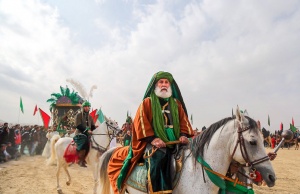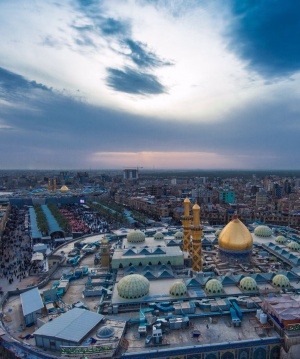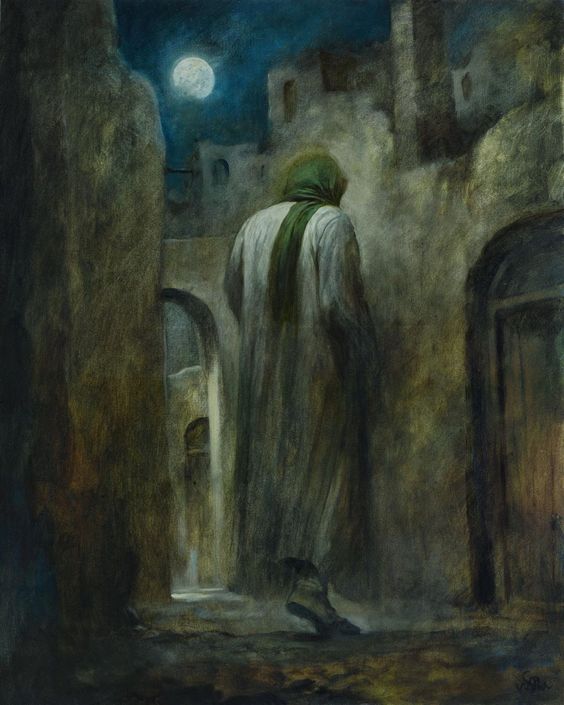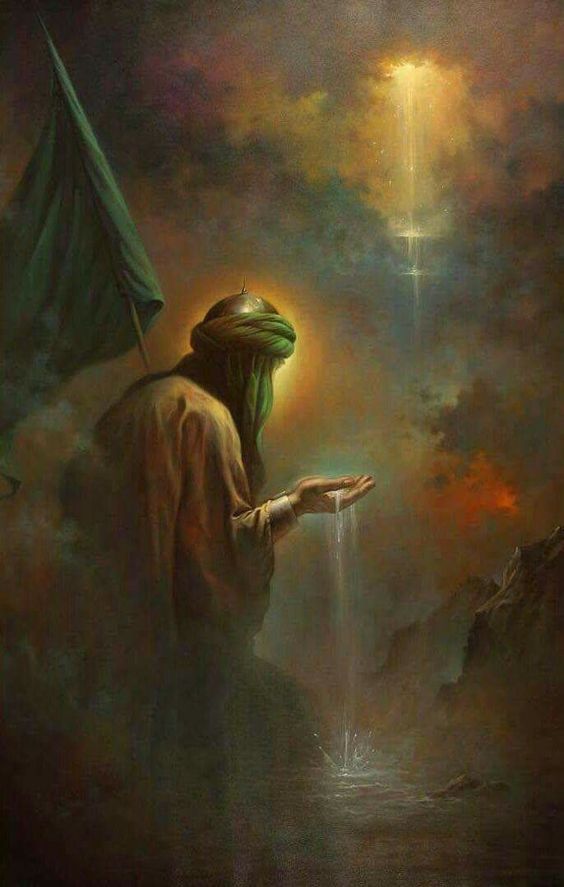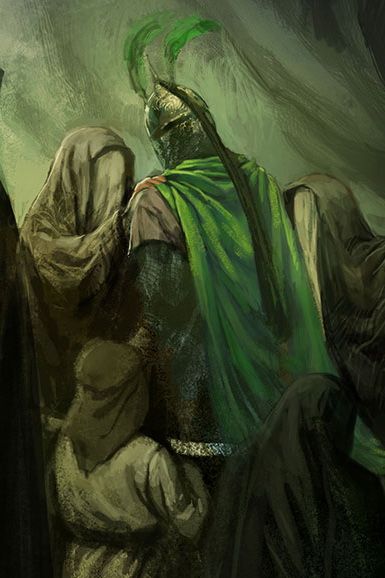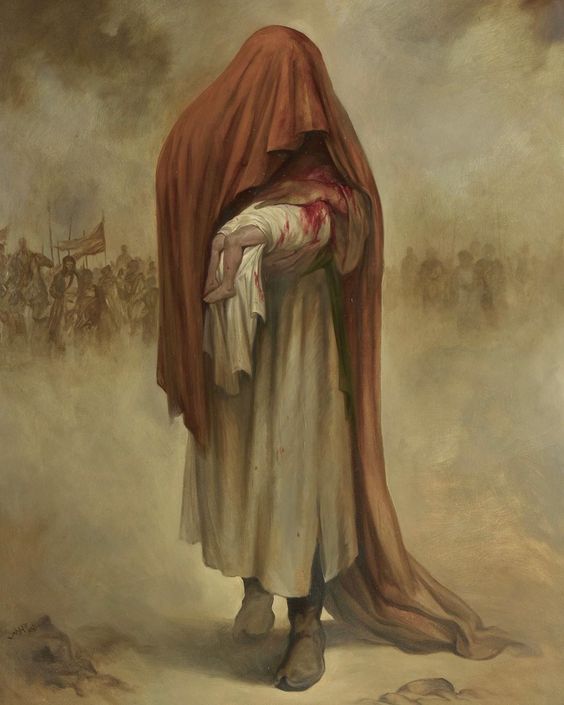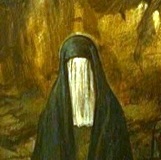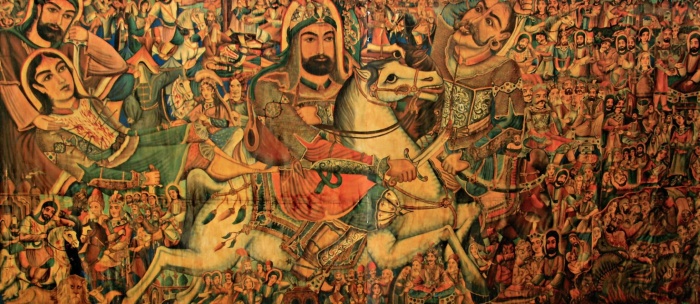- Who was the youngest martyr of Karbala?
- When did the Ziarat Arba’een date back?
- Why did Imam Hasan abdicate the Caliphate to Muawiya?
- How many people were killed during Wahhabis’ attack at Karbala?
- In Ta’ziya (pictured), who is shown testing and training Ali al-Akbar before the Battle?
- Is Ashura considered a day of fasting by Sunnis?
- How many of martyrs of Karbala were descendants of Banu Hashim?
Main Page
Welcome to Wikihussain
- • Literature
- • Geography
- • Art
- • History
- • Religions and Denominations
- • Cultural Studies
Article choisi
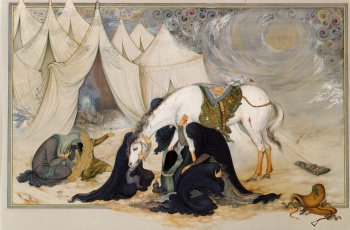 Ashura is the tenth day of Muharram (the first month of the Islamic calendar). It is the climax of the Muharram mourning rituals which commemorates the martyrdom of Hussain ibn Ali, the grandson of the prophet of Islam, Muhammad at the Battle of Karbala on 10 Muharram in the year 61 AH. For Sunnis, it is a day on which fasting is recommended. The root of the word Ashura has the meaning of tenth in Semitic languages. The Arabic term derives from the Hebrew word ʿasor with the Aramaic determinative ending -ā. It refers broadly to the first ten days of Muharram, but more specifically to the tenth day.
Full Article...
Ashura is the tenth day of Muharram (the first month of the Islamic calendar). It is the climax of the Muharram mourning rituals which commemorates the martyrdom of Hussain ibn Ali, the grandson of the prophet of Islam, Muhammad at the Battle of Karbala on 10 Muharram in the year 61 AH. For Sunnis, it is a day on which fasting is recommended. The root of the word Ashura has the meaning of tenth in Semitic languages. The Arabic term derives from the Hebrew word ʿasor with the Aramaic determinative ending -ā. It refers broadly to the first ten days of Muharram, but more specifically to the tenth day.
Full Article...
Did you know
Featured art Works
The “Picture-storyteller Masters of Iran” was written by Hamid Reza Ardalan, musician and scholar of ritual arts of Iran, in thirty volumes. This work introduces thirty Pardekhans who are among the remaining generation of picture-storytellers.This book is the result of ten years of library research and field work of the author. Each volume of this series is around 25 picture pages and includes an introduction and analysis of one of the picture-storytellers. The book and CD, as a contribution to preserving ritual arts and oral heritage of Iran, have been published by “Farhagestan-e Honar” in both English and Persian languages.
Full Article...
Featured Art
The curtain used by murshed Khandan, is illustrated by Ostad Hossein Hamedani, and dates back more than 50 years. The length of the curtain (Parde) is about 4 metres, and is one of the largest of its kind. The Parde has many faces and gatherings painted upon it.
